Abstract
Timeout procedures in the home and extinction and reinforcement of incompatible behaviors in the laboratory failed to eliminate the disruptive and dangerous climbing behavior of a deviant child. Punishment with electric shock was used to eliminate this behavior in the laboratory and then in the home. The effects were reversible and were restricted to specific stimulus conditions. A less severe form of punishment was used to eliminate the child's autistic rocking. Other behaviors of the subject were continuously measured in the laboratory to determine the side effects of punishment. No suppression of other behaviors correlated with punishment was noted. However, the rate of some behaviors increased when punishment was used to eliminate deviant behaviors, but these increases were, primarily, desirable.
Full text
PDF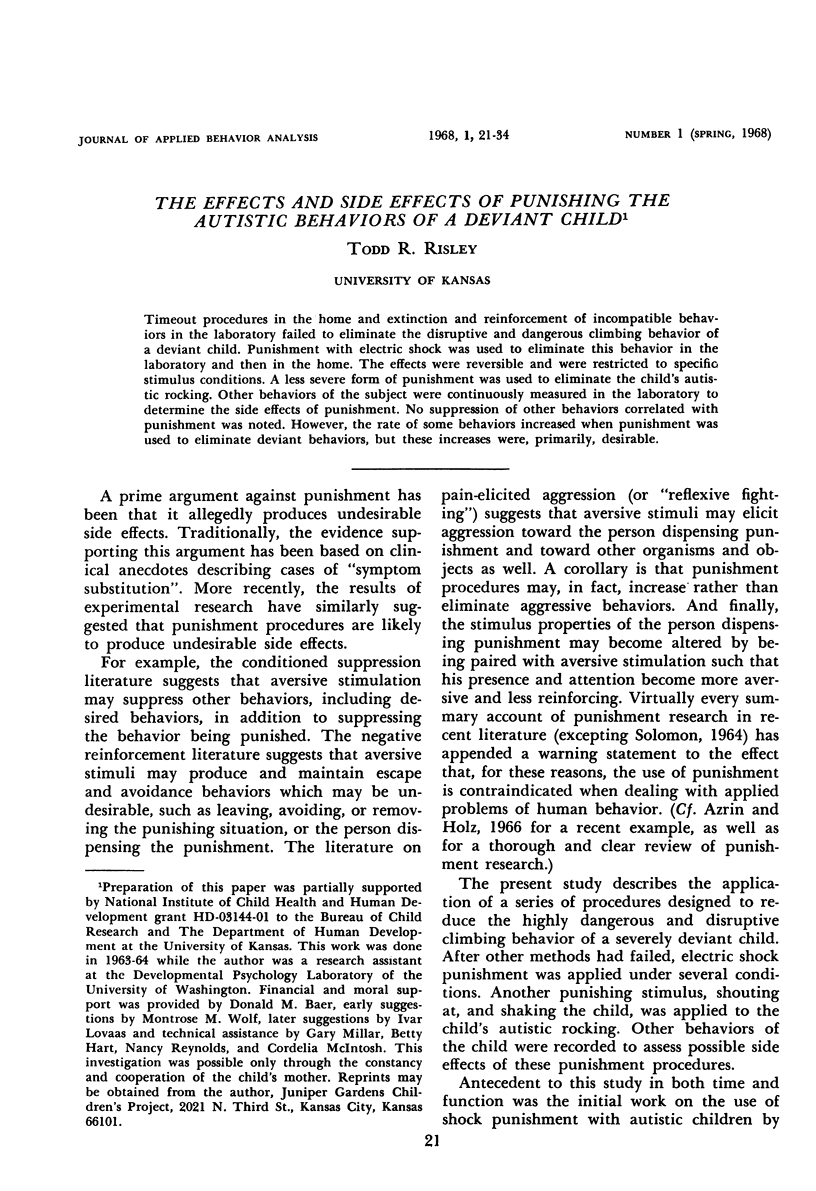
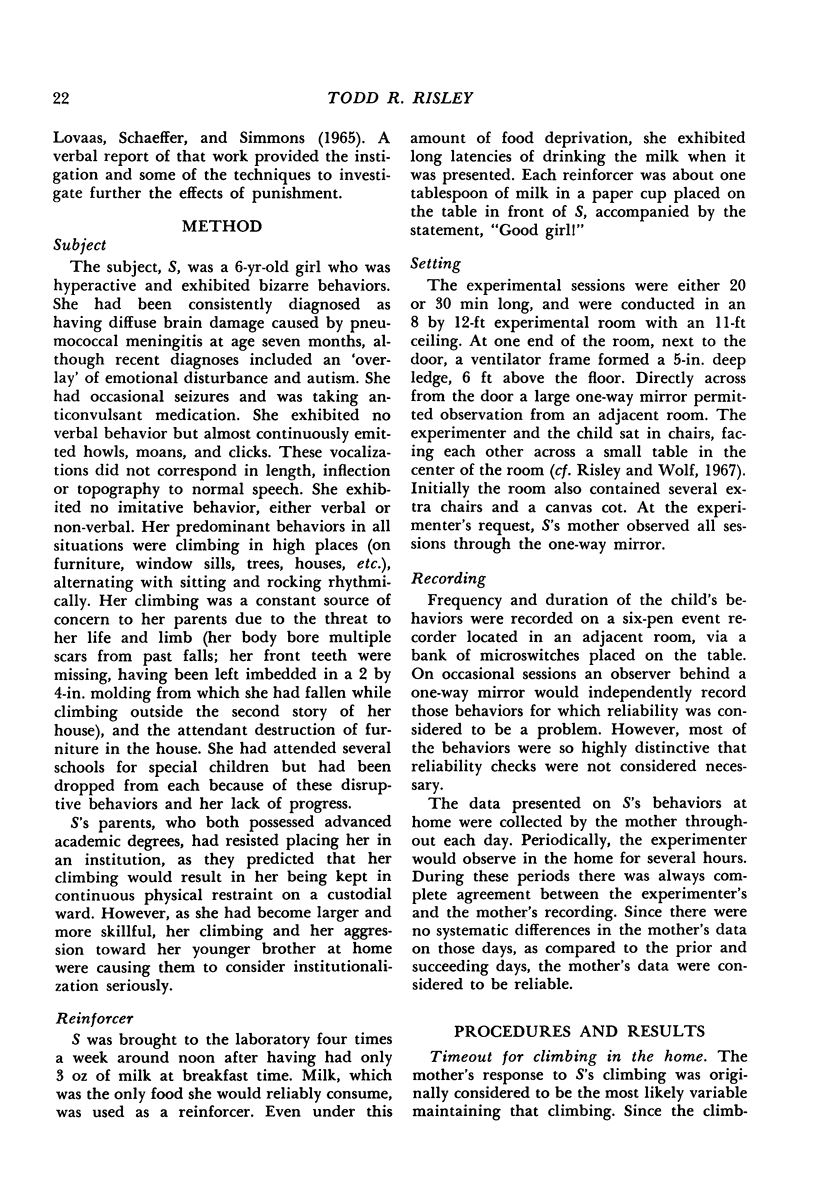
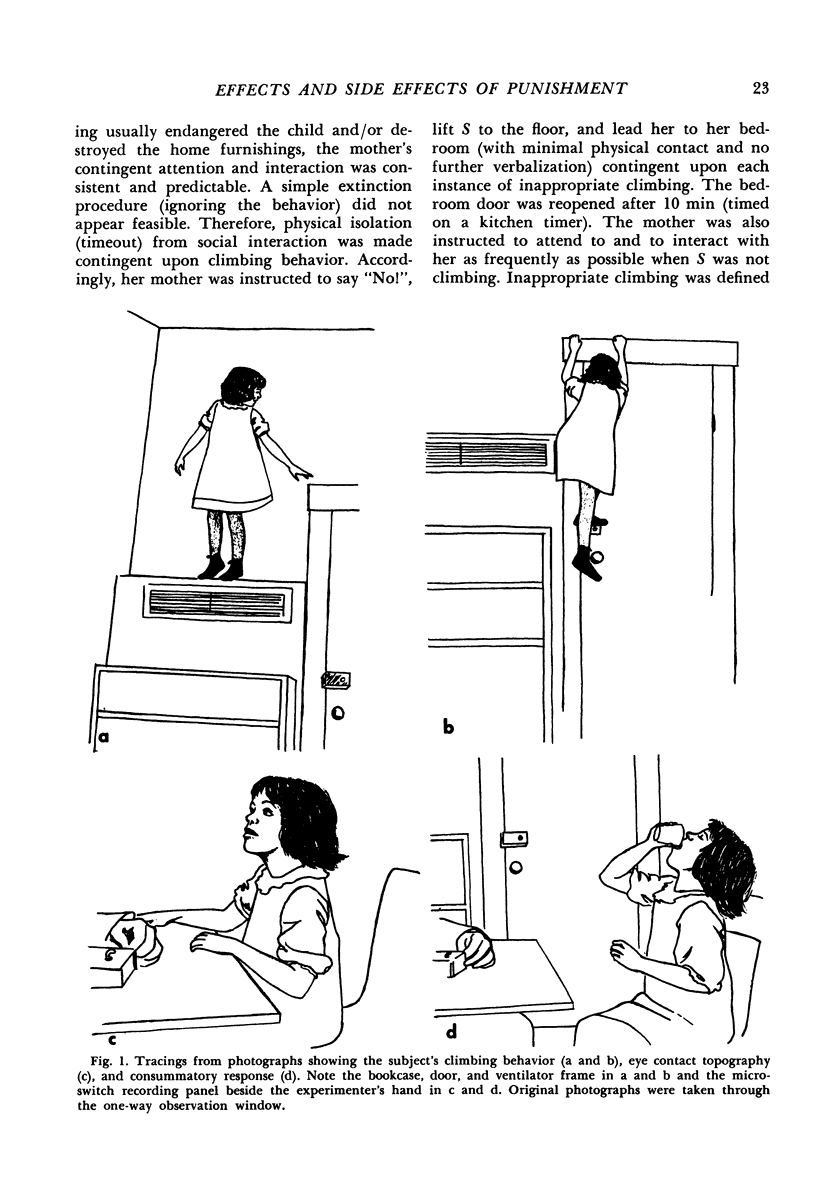
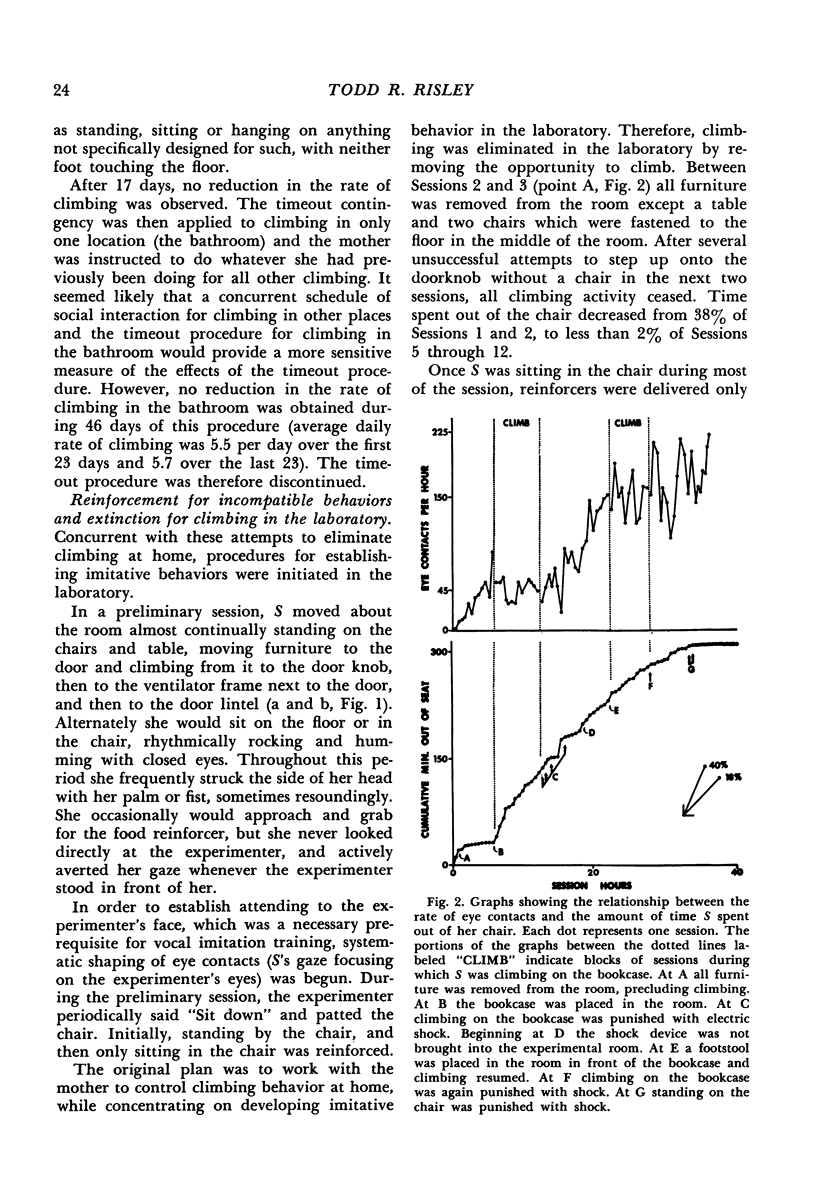
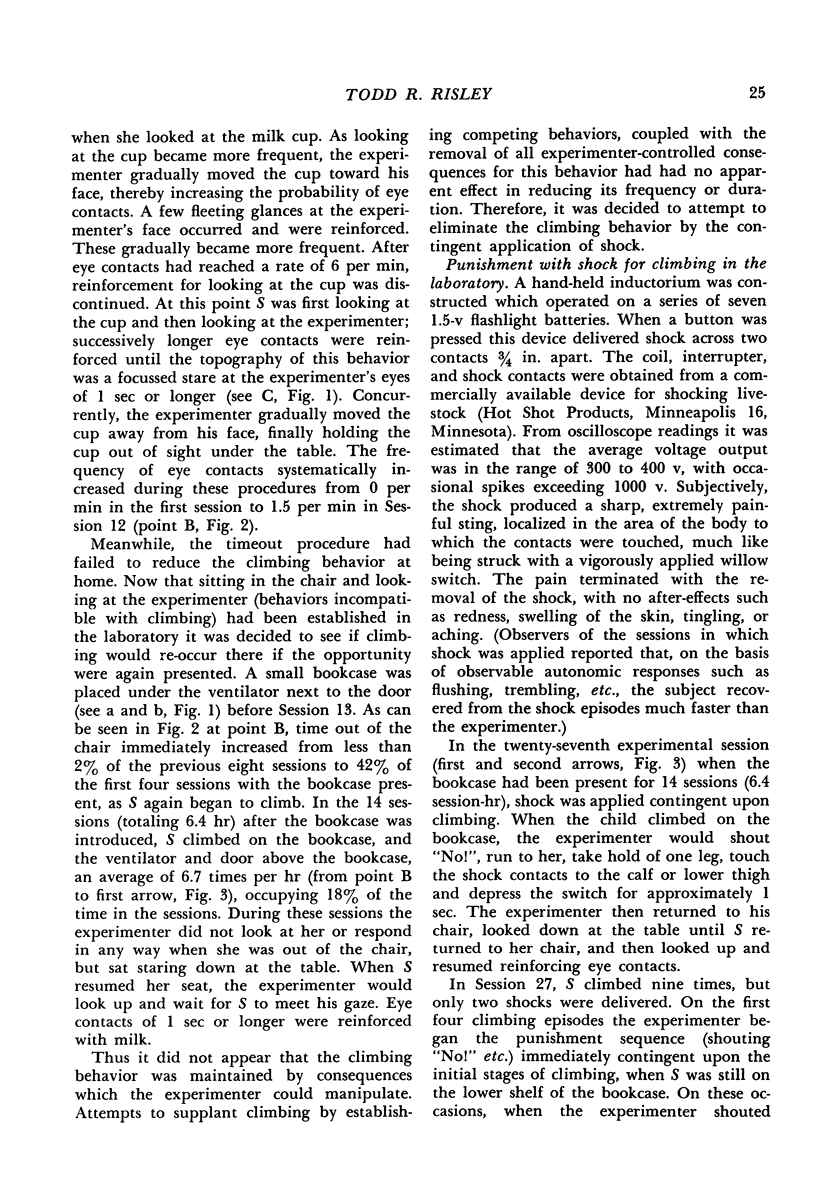
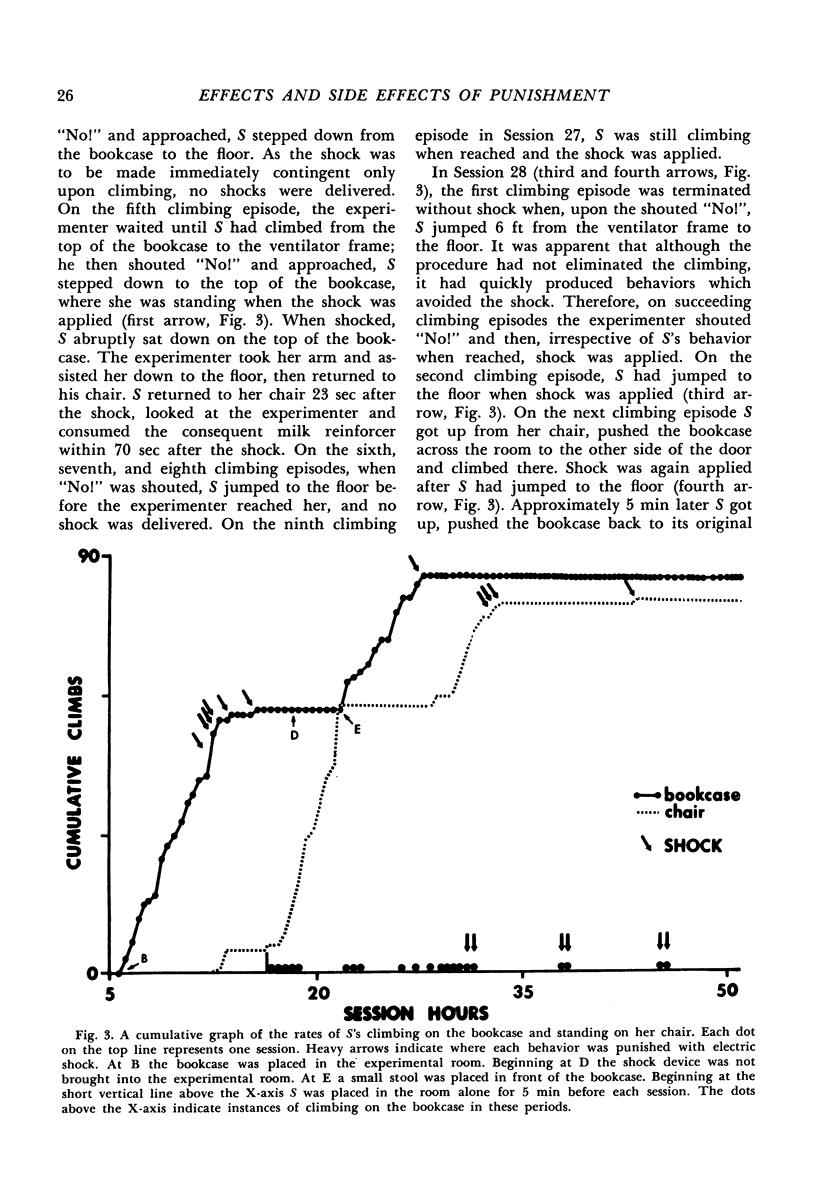
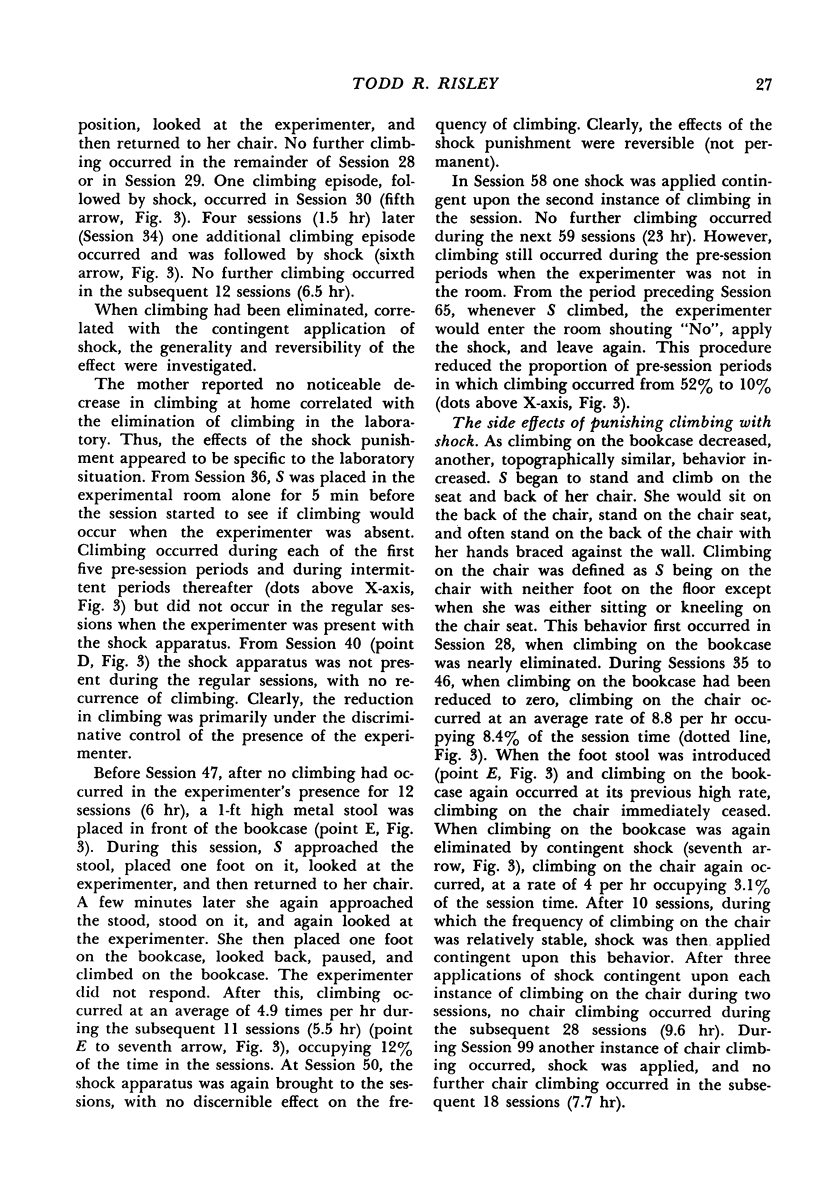
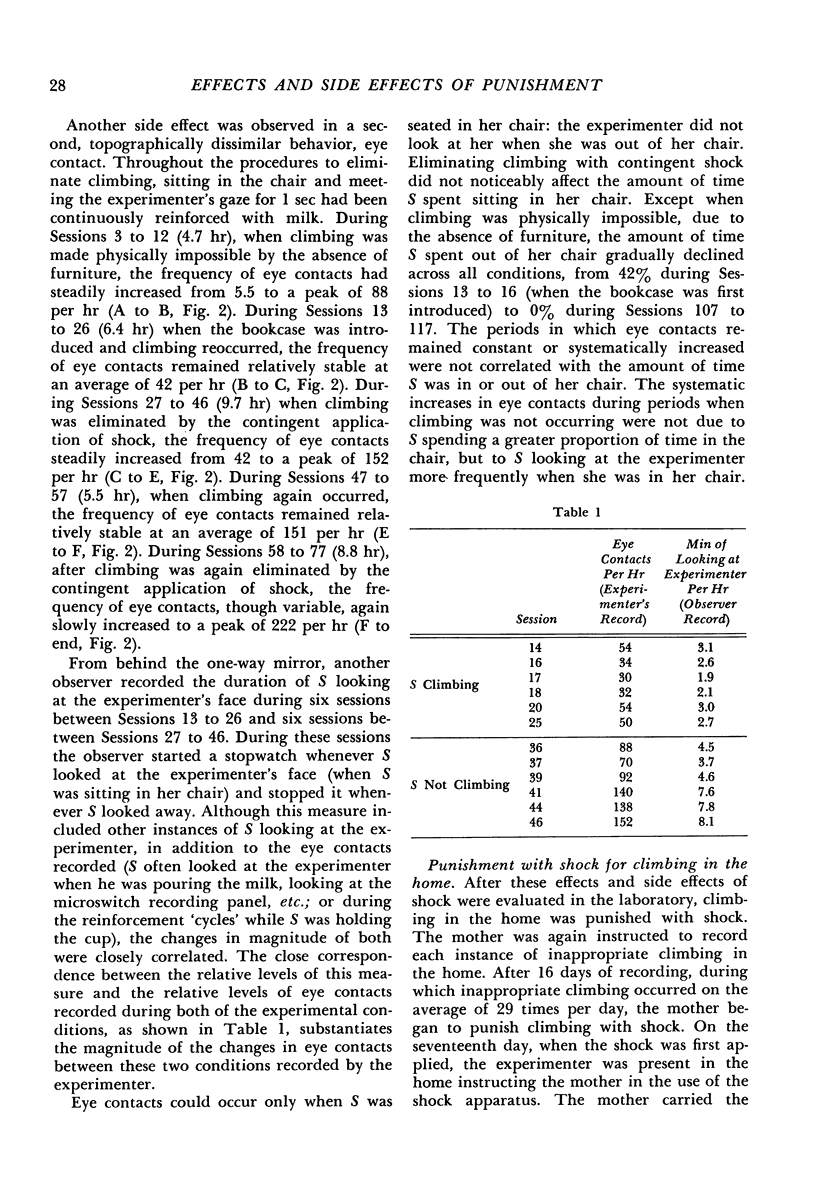
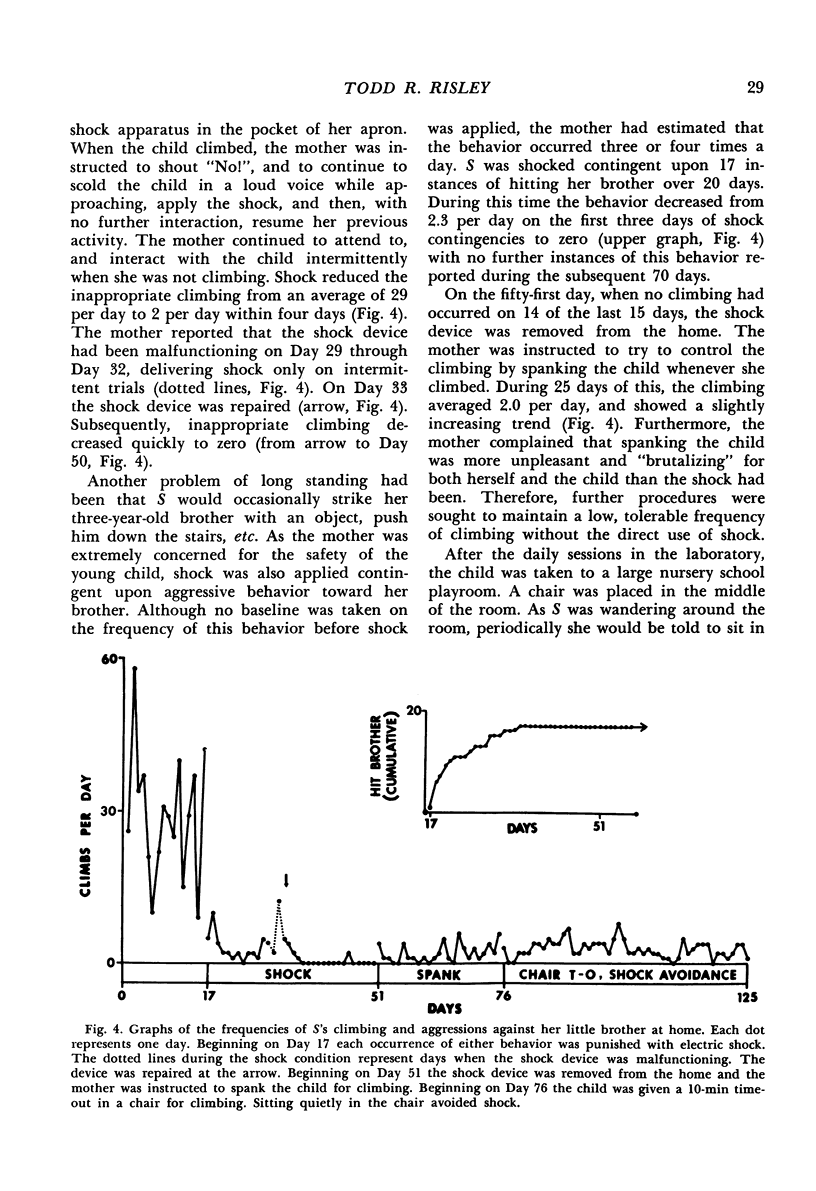
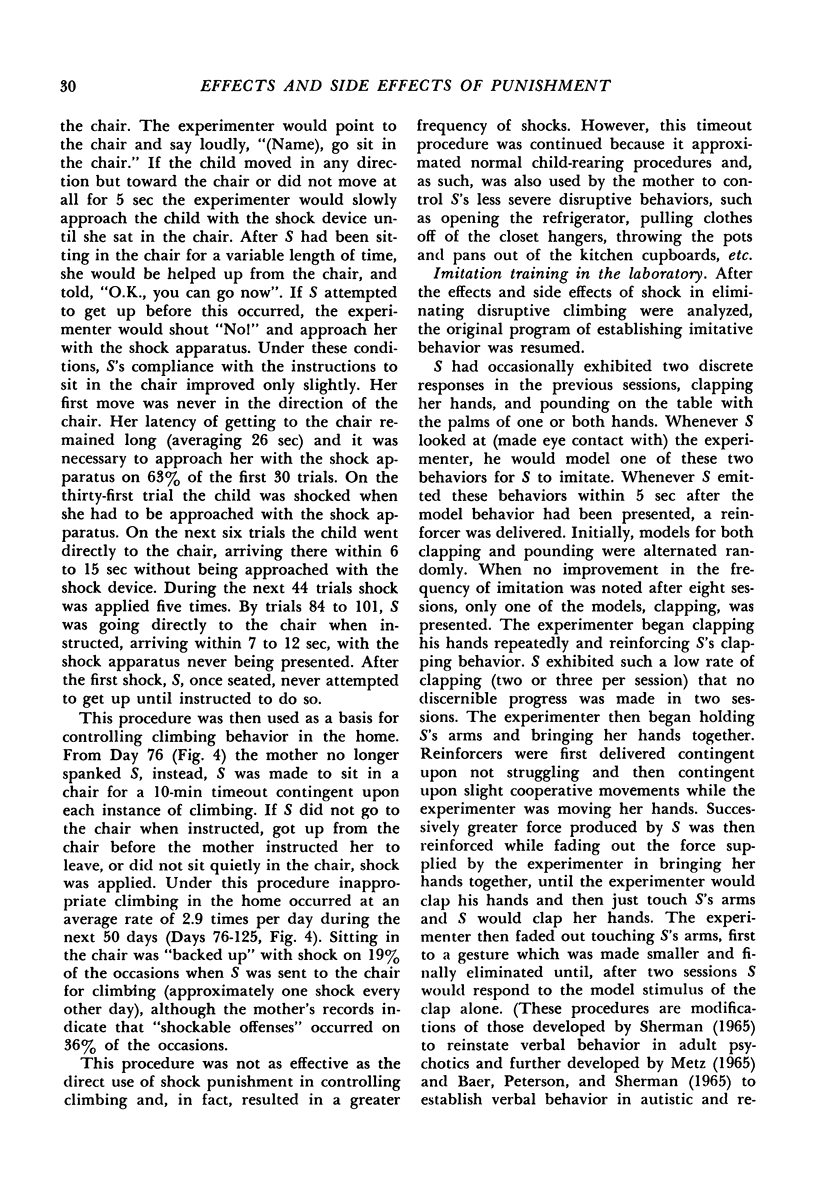
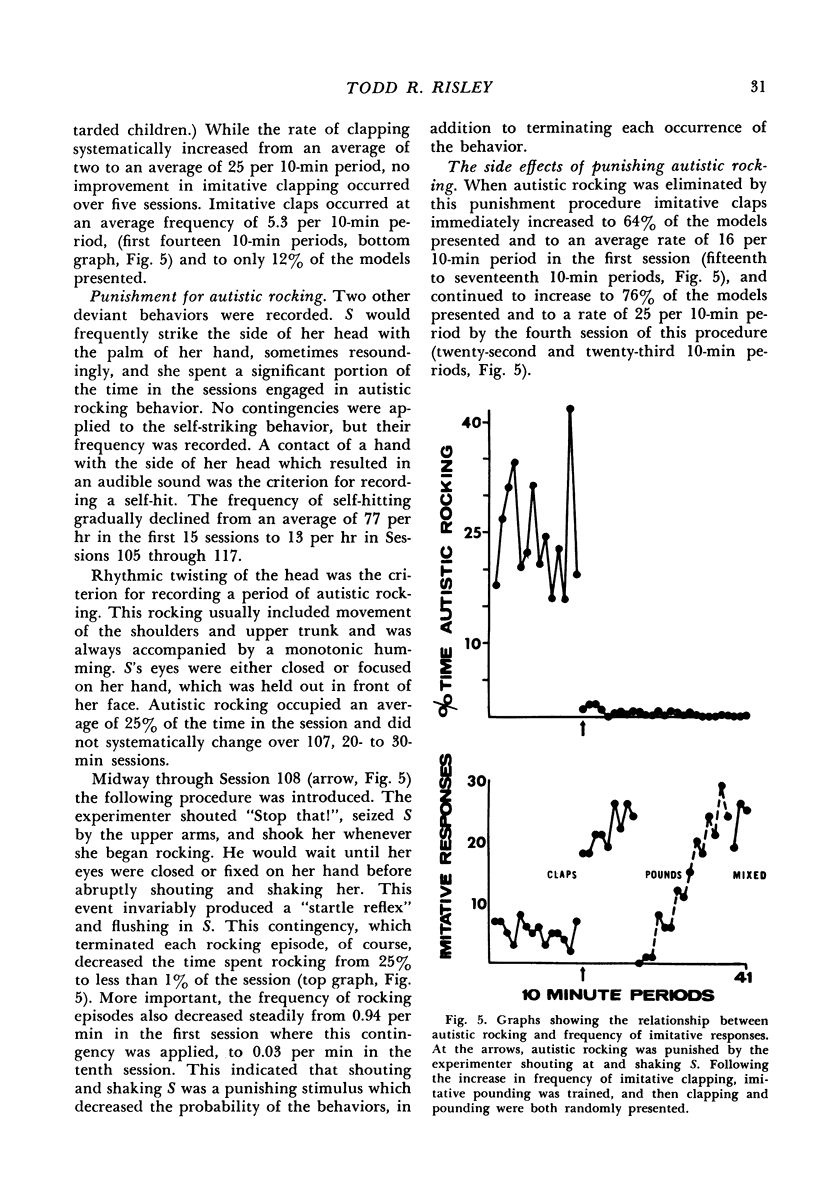
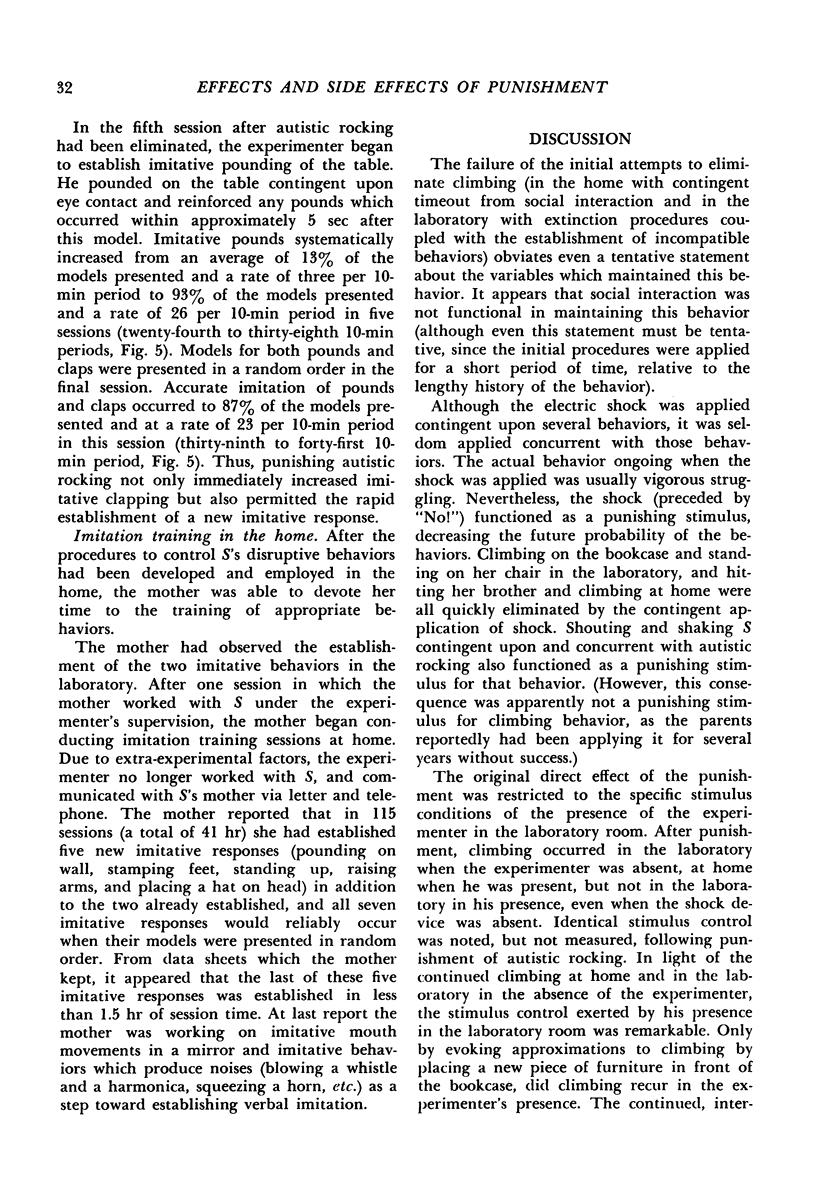
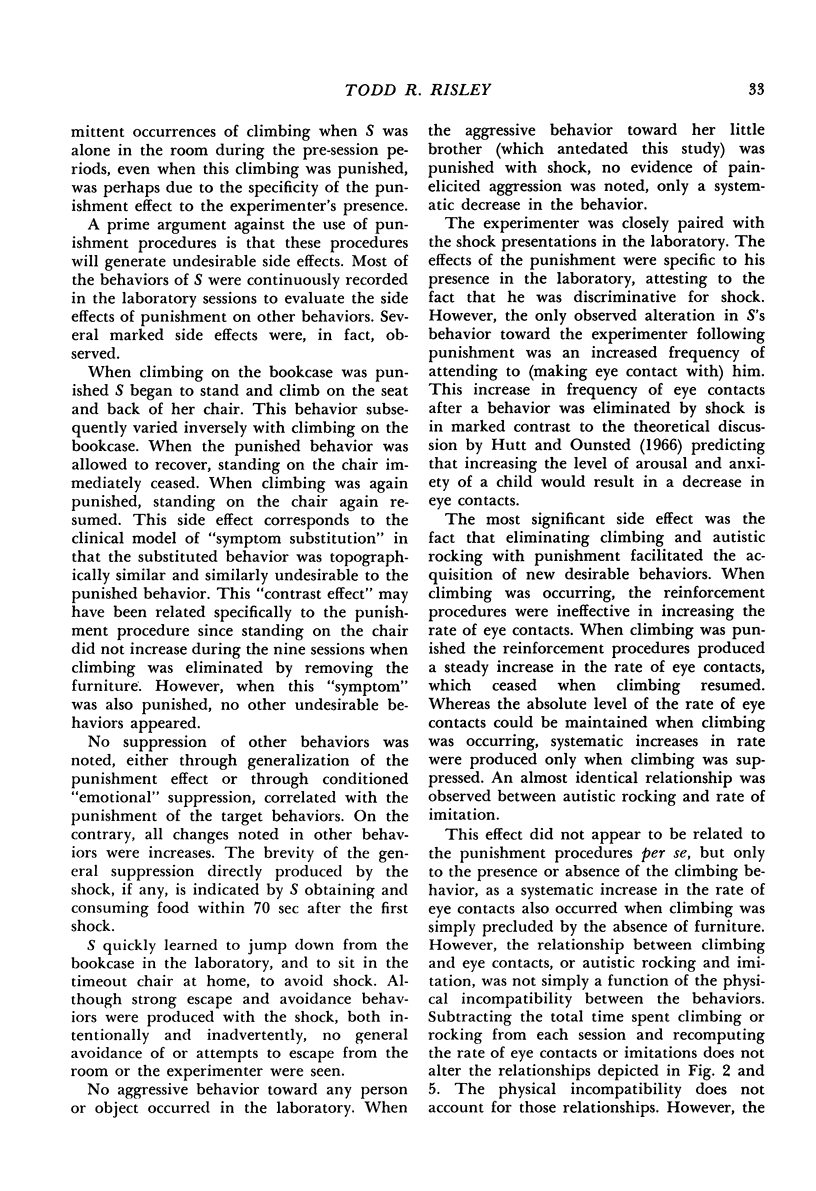
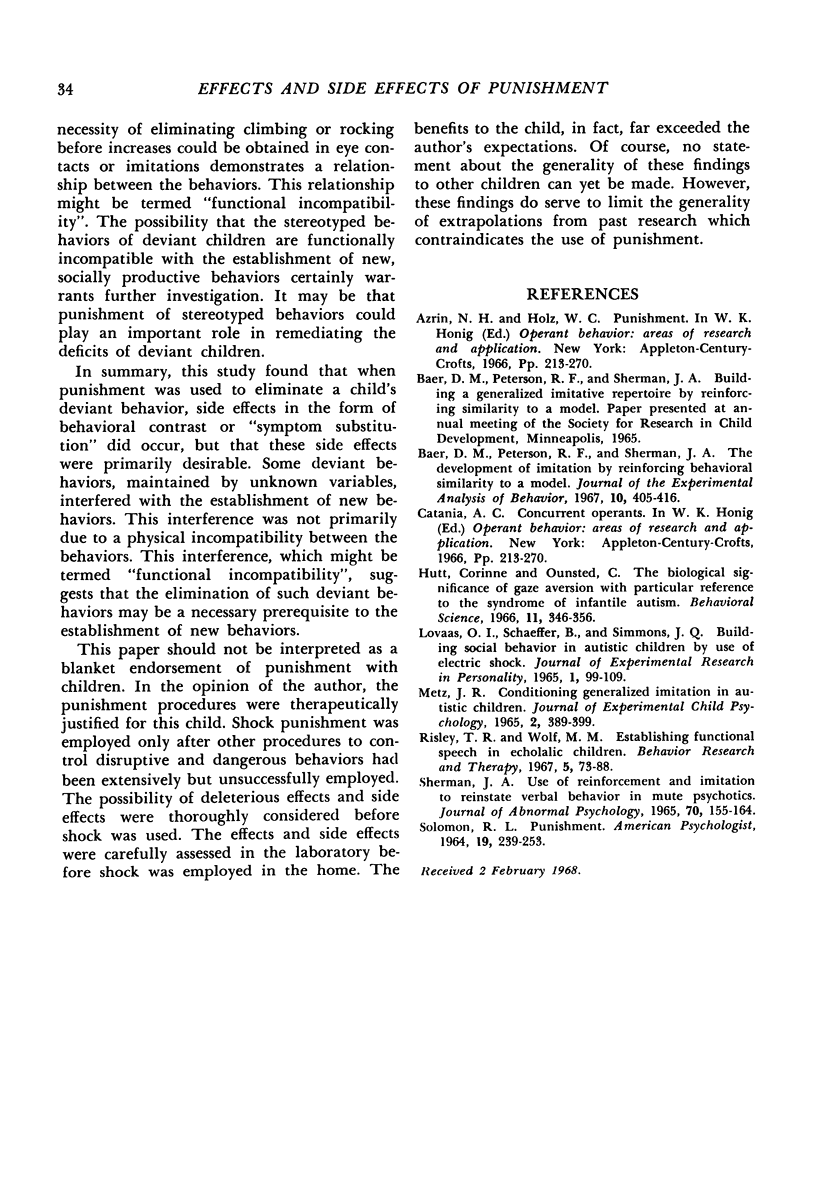
Selected References
These references are in PubMed. This may not be the complete list of references from this article.
- Baer D. M., Peterson R. F., Sherman J. A. The development of imitation by reinforcing behavioral similarity to a model. J Exp Anal Behav. 1967 Sep;10(5):405–416. doi: 10.1901/jeab.1967.10-405. [DOI] [PMC free article] [PubMed] [Google Scholar]
- Hutt C., Ounsted C. The biological significance of gaze aversion with particular reference to the syndrome of infantile autism. Behav Sci. 1966 Sep;11(5):346–356. doi: 10.1002/bs.3830110504. [DOI] [PubMed] [Google Scholar]
- Risley T., Wolf M. Establishing functional speech in echolalic children. Behav Res Ther. 1967 May;5(2):73–88. doi: 10.1016/0005-7967(67)90001-0. [DOI] [PubMed] [Google Scholar]
- SHERMAN J. A. USE OF REINFORCEMENT AND IMITATION TO REINSTATE VERBAL BEHAVIOR IN MUTE PSYCHOTICS. J Abnorm Psychol. 1965 Jun;70:155–164. doi: 10.1037/h0022148. [DOI] [PubMed] [Google Scholar]


